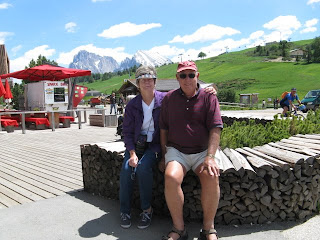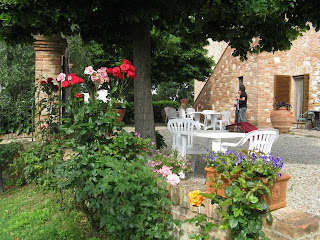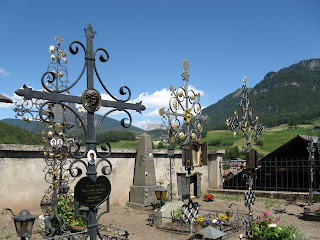
An appetizer of lardo.

Gene and Sandrini in the cantina.

Polenta on the fire.

Our view of Lake Como from the balcony.
We are roughing it in Tremezzo on Lake Como. As guests of Joan and Gene Cervelli, we have the downstairs suite, just off the pool. The home they are renting for the next eight weeks sits high in the hills above the water . . . and yesterday we hiked all the way down (and back up!). You can see snow on the distant peaks, eagles soaring above the lake and boats scurrying back and forth. What a pleasant spot!
Last night we drove into Switzerland, just a few miles away, to have dinner at Grotto Bundi owned by Stefano and Sandrini Romelli. Stefano's cousin Don was on the boat with us in Croatia and Don told us all about this restaurant. The restaurant is built into the side of a mountain, and the "cantina" is a storage room with vents dug into the rock. Cold air pours out of the holes and keeps the cantina cold. This is where they store their wine, sausages, cornmeal to make the polenta, and other perishables.
Polenta is their specialty, and they make it twice a day on an open fire on the second floor of the restaurant. We ate outside, under huge trees, along side the street. We had called ahead and told them we were coming and were looking forward to a dinner of oso buco (their Tuesday special). When we arrived, they were out of oso buco. As a consolation, they served us a "typical" meal of deboned quail, rabbit, beef, white beans and mortadella (a type of sausage), and a mushroom dish, all in wonderful sauces. An appetizer of lardo, a finely sliced bacon-type dish, preceded the dinner. Three desserts were presented, including raspberry sorbet with raisins soaked in grappa (wine). What a treat!
Don's cousin, Stefano, is every bit as entertaining as Don himself. They send their love to Don and Marilyn.







































